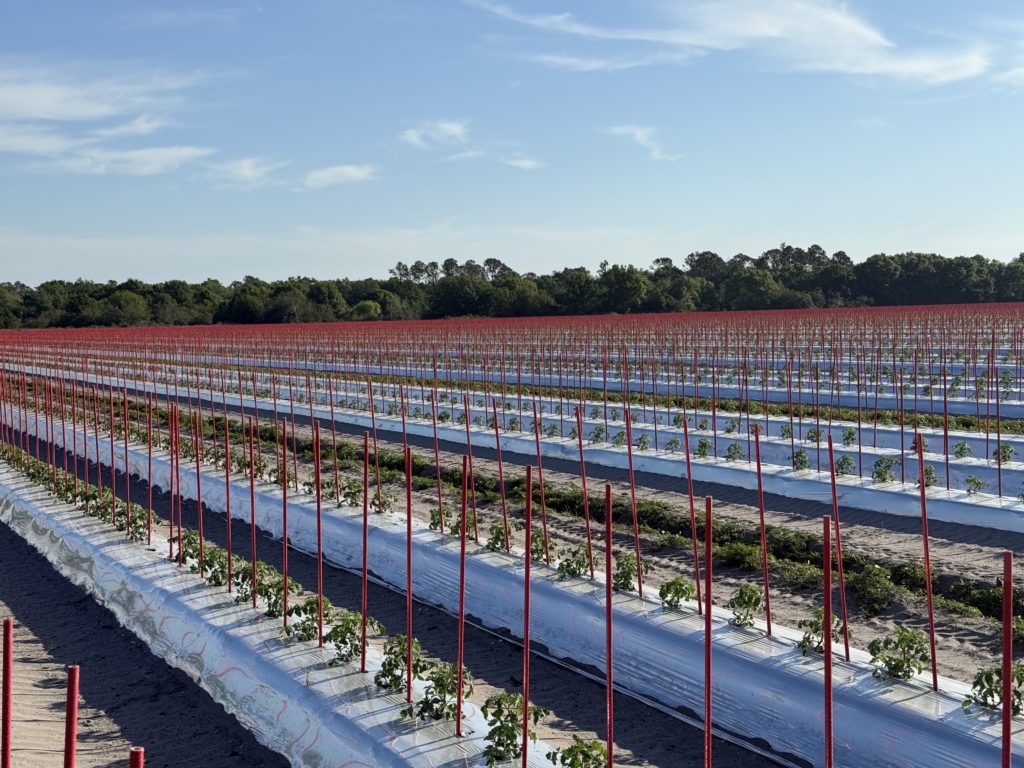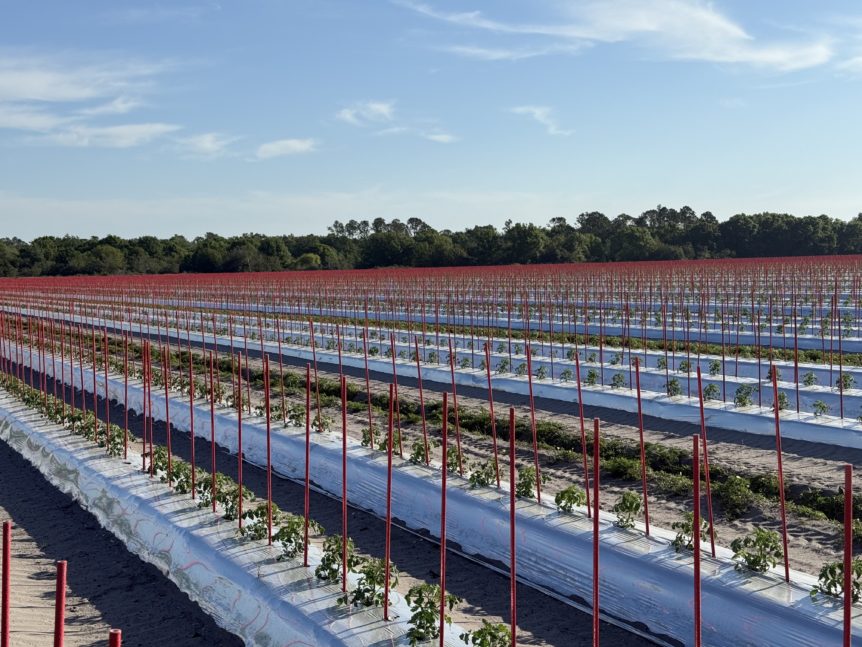
Many specialty crops grown in the Southeast rely on plasticulture systems to optimize production. Key components of those systems include the mulch itself and other elements such as stakes utilized in crops like tomato and pepper.
Paper Mulch
For years, growers and agricultural researchers have studied ways to reduce waste in these systems to lessen costs and environmental impacts. Some of that research has focused on biodegradable mulches. The benefits to growers are no plastic to pull up and dispose of at the end of the season and no chance of plastic left in the soil.
The challenge has been identifying a material that performs well. Recent research has been studying paper mulch as an alternative. Bob Hochmuth, University of Florida Institute of Food and Agricultural Sciences (UF/IFAS) regional specialized Extension agent in Live Oak, has been studying its use in watermelon.
The paper mulch can simply be tilled into the soil after the season, which has several conservation benefits. But what is most appealing to growers is the product’s suppression of nutsedge. Hochmuth said the nutsedge has a harder time coming through the paper than it does the plastic.
UF/IFAS Research
UF/IFAS research in Florida showed that the presence of 25 yellow nutsedge plants per square meter (2.32 per square foot) in a watermelon bed throughout the season reduced yield by 98%. Six yellow nutsedge plants per square meter (0.56 per square foot) reduced yield by 20%.
This past spring, Hochmuth collaborated with watermelon growers in North Florida to evaluate more than 100 acres of paper mulch. He said growers targeted fields with known nutsedge problems. Early in the season, the suppression of nutsedge was evident in the paper mulch.
“It can be turned into the soil at the end of the season, so we don’t have to pick the paper up,” Hochmuth said. “The current research is also looking at things like temperature retention in the soil and moisture retention in the soil. It appears as though the paper, which is a better insulator than plastic, retains maybe a degree or two or three of temperature on a cold night. That could be a huge advantage.”
Longer-Lasting Stakes
Another key tool in some plastic mulch crops is the wooden stakes used to tie crops like tomato and pepper. But over time, the wood degrades and needs replacement.
Some growers are transitioning to more durable materials that give stakes a longer life in the field. Miguel Talavera, director of east coast farming operations for Pacific Tomato, was looking for alternatives to wood.
“We had been using wooden stakes for many years, but over time they were not lasting, and some would need replacement after three years,” he said. “That is when we began looking for some alternative materials.”
He began collaborating with Florida Agricultural Stakes, which culminated in the design of a fiber-reinforced polymer stake that is light weight, has UV protection and a hard coating that allows reuse for multiple seasons.
“We tested different materials, diameters and heights across all of our field locations in different states,” Talavera said. “It was almost a two-year research and development process with the company to get to the stake that worked for us.
“They have performed well, and with a slight adjustment in how we prepare our beds, the stakes can be installed by hand, which is another benefit. We have some of these fiber stakes that have been in use now for eight years. Last season, we finished the transition to 100% of our stakes made with this material. It is a little more of an investment on the front end, but we are seeing the improved longevity.”










